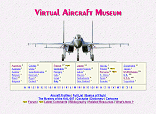|
|
|
Founded by C R. (later Sir Richard) Fairey, initially to build
12
 | | III |
Short 827 seaplanes. Leased premises at Hayes, Middlesex,
replaced by new factory 1917-1918. Became a
public company March 5,1929 and the following year
opened new airfield at Harmondsworth, later requisitioned
and incorporated in site
 | | "Hendon" |
for London's Heathrow Airport.
Reorganized as holding company The Fairey Company Ltd.
March 31,1959, aircraft manufacturing subsidiary becoming
Fairey Aviation Ltd. and the Stockport plant Fairey Engineering
Ltd. Fairey Aviation Ltd. merged with Westland
Aircraft
 | | Long Range Monoplane |
Ltd. in 1960. Britten-Norman (Bembridge) Ltd.
acquired 1972. Fairey group into liquidation 1977; engineering
activities acquired by National Enterprise Board;
Britten-Norman operated by liquidator pending sale.
Company designs included F.2 twin-engined biplane
fighter; camber-changing trailing-edge
 | | Swordfish |
flaps introduced
on Hamble Baby. Fairey III series introduced 1917; final
model IIIF entered production 1926 and declared obsolete
1940. Fairey Hendon (1930) was the first British cantilever
monoplane heavy bomber; Long-range Monoplane
captured absolute
 | | "Barracuda" |
distance record for Britain 1933. The
famous Fairey Swordfish ("Stringbag") torpedo bomber
entered production in 1936; 2,392 were built by Fairey
and Blackburn; it was the only biplane to remain in service
throughout Second
 | | "Gannet" |
World War. Other famous aircraft
included Battle light bomber, Fulmar fleet fighter, and Barracuda
dive-bomber. Firefly name revived for Rolls-Royce
Griffon-powered monoplane which entered FAA service in
1943, serving in Korea in 1950. First
 | | F.D.2 |
FAA aircraft to combine
search and strike roles was the Gannet with Double
Mamba coupled turbines; developed Gyrodyne convertible
helicopter 1946; Jet Gyrodyne 1953; Rotodyne compound
helicopter airliner 1957. Fairey Delta 2 research
aircraft set world air speed record of 1,822km/h on March 10, 1956.
Back to the letter F

|
|

All the World's Rotorcraft
Virtual Aircraft Museum
Hamble Baby
"Campania"
F.2
N9
III
F.128
N10
Pintail
Flycatcher
Fawn
N.4
Fremantle
"Fox"
Ferret
Firefly (biplane)
Long Range Monoplane
Fleetwing
"Hendon"
Gordon
Seal
Swordfish
TSR I
G.4/31
Fantome
"Battle"
Seafox
"Fulmar"
P.4/34
"Albacore"
"Barracuda"
"Firefly"
"Spearfish"
"Gannet"
FD.1
F.D.2
Gannet A.E.W.3
|










